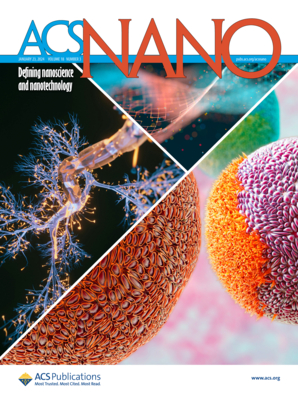IF 15.8
1区 材料科学
Q1 CHEMISTRY, MULTIDISCIPLINARY
引用次数: 0
摘要
二维层状过渡金属二掺杂物(2D TMDs)具有可调的电子特性、层状结构和有效的离子插层能力,因此已成为超级电容器(SCs)的理想候选材料。尽管具有这些优势,但低导电性、层间重新堆叠、氧化和结构坍塌等挑战阻碍了它们的实际应用。本综述全面概述了用于 SC 的二维 TMD 的最新进展。我们首先概述了电荷存储机制和电容器的设计原则,然后深入讨论了合成方法以及制造二维 TMD 结构所面临的相关挑战。随后的章节探讨了它们的晶体结构和反应机制,说明了它们在 SC 中的电化学潜力。此外,我们还重点介绍了为克服现有挑战而提出的材料改性策略,包括纳米结构、缺陷工程、相位控制和表面/界面调制。最后,我们讨论了二维 TMD 的关键问题和新出现的机遇,以启发 SC 技术的发展。本文章由计算机程序翻译,如有差异,请以英文原文为准。

Emerging Issues and Opportunities of 2D Layered Transition Metal Dichalcogenide Architectures for Supercapacitors
Two-dimensional layered transition metal dichalcogenides (2D TMDs) have emerged as promising candidates for supercapacitor (SCs) owing to their tunable electronic properties, layered structures, and effective ion intercalation capabilities. Despite these advantages, challenges such as low electrical conductivity, the interlayer restacking, oxidation and structural collapse hinder their practical implementation. This review provides a comprehensive overview of recent advances in the development of 2D TMDs for SCs. We begin by outlining the charge storage mechanisms and design principles for SCs, followed by an in-depth discussion of the synthesis methods and the associated challenges in fabricating 2D TMD architectures. The subsequent sections explore their crystal structures and reaction mechanisms, illustrating their electrochemical potential in SCs. Furthermore, we highlight material modification strategies, including nanostructuring, defect engineering, phase control, and surface/interface modulation, which have been proposed to overcome existing challenges. Finally, we address critical issues and emerging opportunities for 2D TMDs to inspire the development of SC technologies.
求助全文
通过发布文献求助,成功后即可免费获取论文全文。
去求助
来源期刊

ACS Nano
工程技术-材料科学:综合
CiteScore
26.00
自引率
4.10%
发文量
1627
审稿时长
1.7 months
期刊介绍:
ACS Nano, published monthly, serves as an international forum for comprehensive articles on nanoscience and nanotechnology research at the intersections of chemistry, biology, materials science, physics, and engineering. The journal fosters communication among scientists in these communities, facilitating collaboration, new research opportunities, and advancements through discoveries. ACS Nano covers synthesis, assembly, characterization, theory, and simulation of nanostructures, nanobiotechnology, nanofabrication, methods and tools for nanoscience and nanotechnology, and self- and directed-assembly. Alongside original research articles, it offers thorough reviews, perspectives on cutting-edge research, and discussions envisioning the future of nanoscience and nanotechnology.
 求助内容:
求助内容: 应助结果提醒方式:
应助结果提醒方式:


